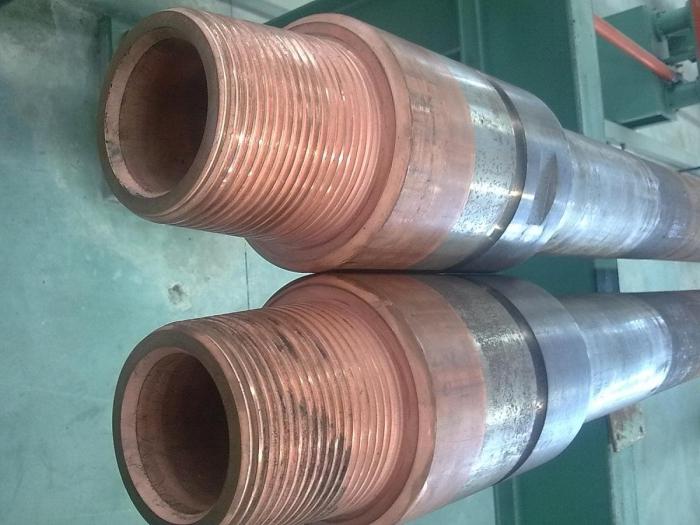Drill pipes are designed for equipping gas and oil wells. With the help of such equipment, a rock-cutting tool is raised and lowered into the well, the torque is transmitted, a load (axial) is applied to the tool, and compressed air or flushing solution is supplied into the face. Their production is mainly carried out according to GOST No. 50278-92. According to this normative act, products are made of steel, formed in a seamless way and have upset ends to which locks are welded.
Drill pipes can have different types of upset parts, including: internal, external or combined heading (designated as PV, PN or PK, respectively). Products of the PV group are available with a nominal outer diameter from 73 to 101.6 mm, wall thickness from 8.4 to 11.4 mm, the estimated mass of one meter of smooth pipe is from about 14 to 22 kg.
The diameters of drill pipes of class PC reach at face value 139.7 mm (the minimum value is 114.3 mm). And pipes with external upsetting (PN) have a smaller nominal diameter in accordance with the above GOST (127 mm). In addition to the diameter, for the nominal value for pipes, such parameters as the diameter of the lock (produced according to GOST 27 834) and the diameter of the welded joint, including the inner and the diameter of the elevator, are considered. Another important parameter is the length, which is represented by three groups: from 5.9 meters to 6.3, from 8 to 8.6 m and from 11.9 to 12.5 meters. Modern production allows the production of pipes of both greater and shorter lengths, but in this case they will not fit the established standards.

High-quality drill pipes should be made so that there are no cracks, delaminations, shells and other defects on their surface. Such flaws can be corrected only along the axis of the pipe, while sealing, caulking and welding of problem areas are not allowed, they can only be cleaned or cut down.

The production of drill pipes is organized so that the mass fraction of phosphorus and sulfur in each melt is closely monitored. If the company uses third-party raw materials, then documents on conformity of quality are required from the manufacturer. Today, some companies produce products with an internal coating (for example, TK-34R), which allows protecting pipes from abrasive corrosion, rack corrosion, reducing the likelihood of fatigue failure, as well as hydraulic losses during drilling. The covering surface is applied by powder method and allows the pipe to withstand more than 500 hours of operation at temperatures above 150 ° C, to obtain impact resistance of more than 8 J at a temperature of 20 ° C, etc.
Drill pipes are known as equipment that often breaks due to wear of the diameter of the lock (external, up to 60% of all cases). In this case, the remaining parts of the pipe remain suitable for operation. Recently, to solve this problem, methods of carbide welding of locks have been practiced. This avoids cracks formed under high voltage conditions and other factors of extreme operation.